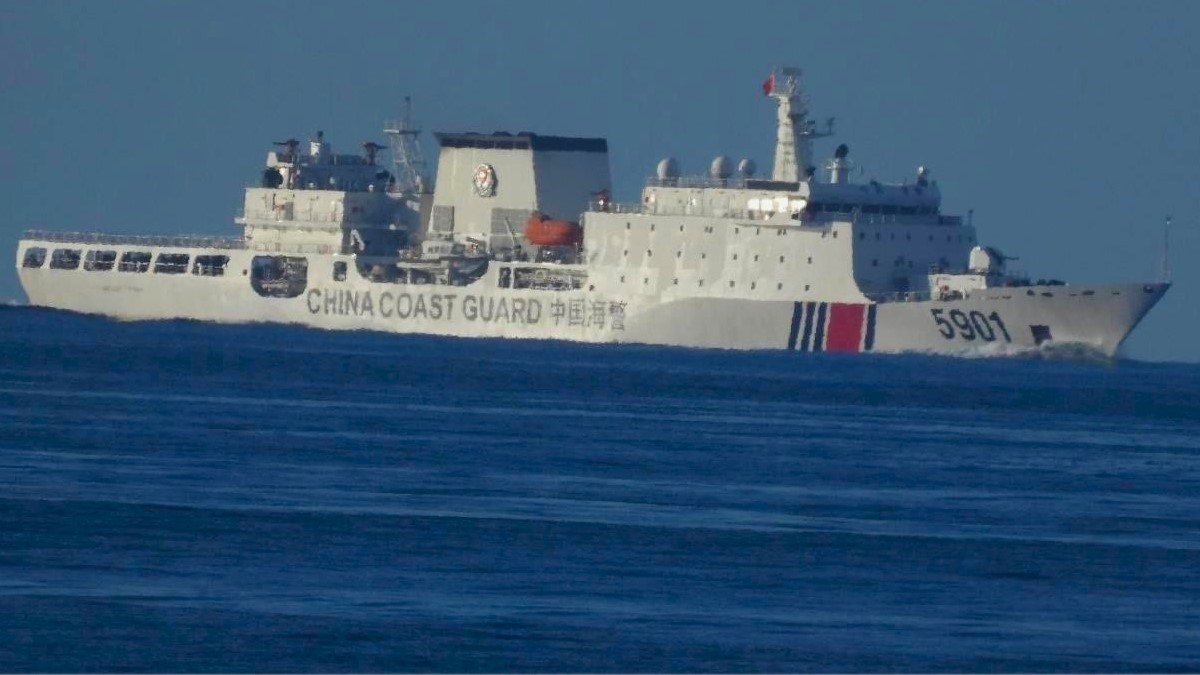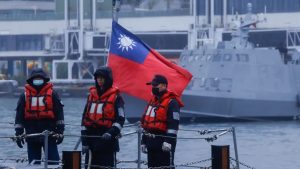
Manila Condemns China’s ‘Monster’ Ship in Philippine Waters

Chinese coast guard vessel 5901, dubbed “The Monster” for its size, has maintained an “illegal presence” in Philippine waters for a week, said a spokesperson for the country’s navy.
Roy Vincent Trinidad told reporters on Tuesday that the CCG 5901 has been near Sabina Shoal, known in the Philippines as Escoda Shoal, since July 3.
Manila’s biggest and most modern coast guard ship – the BRP Teresa Magbanua – has been shadowing the movements of the Chinese vessel, he said.
The 2,260-ton Philippine multi-role response vessel, however, is dwarfed by “The Monster” which is five times its size.
At some points, the Chinese ship was only about 500 meters (1,640 feet) from the BRP Teresa Magbanua, according to Trinidad.
While under the United Nations Convention on the Law of the Sea, or UNCLOS, foreign vessels can conduct so-called innocent passage and freedom of navigation operations, the spokesperson said, adding: “We are monitoring them because they should not be conducting any maritime research, they should not be doing anything detrimental to the security of the state.”
The Philippine coast guard first spotted “The Monster” anchored near Sabina Shoal last Saturday.
The shoal, claimed by China, the Philippines, Vietnam and Taiwan, is less than 90 nautical miles (167 km) off the coast of Palawan island inside the Philippines’ exclusive economic zone, or EEZ, where Manila has jurisdiction over natural resources.
Philippine coast guard spokesperson Jay Tarriela said at the time that his forces radio challenged the Chinese vessel, warning that it was operating inside the Philippine EEZ but “The Monster” did not respond.
“It’s an intimidation on the part of the China coast guard,” Tarriela said.
The 12,000-ton CCG 5901 is the largest coast guard vessel in the world and is heavily armed.
When asked about the statement, a Chinese foreign ministry spokesperson said the shoal belonged to China.
Lin Jian said that it is part of Chinese Nansha islands, also known as the Spratly islands, not the Philippines’ EEZ.
“To patrol and conduct law enforcement activities by Chinese military and coast guard vessels in the waters near Xianbin Jiao is within China’s domestic law and international law, including UNCLOS,” Lin said, referring to Sabina Shoal by its Chinese name.
Suspected land reclamation
China lays claim to most of the South China Sea and draws a so-called nine-dash line on its maps to mark its “historic rights.”
An international arbitration tribunal in a case brought by the Philippines in 2016 ruled that China’s claims are unlawful but it has refused to recognize the ruling.
“The Monster” last month conducted a 10-day patrol along the nine-dash line to reinforce it before returning to the Philippines’ EEZ this month.
China has also been sending research vessels, naval vessels and other ships to Sabina Shoal, leading to suspicion that it is attempting to build an artificial island there.
The Philippine coast guard said that crushed corals had been dumped on the shoal – an indication of the early stage of land reclamation.
China’s foreign ministry dismissed the accusation as “groundless and pure rumor.”
Sabina Shoal is also important to the Philippines as it serves as the meeting point for vessels resupplying troops stationed at the nearby Second Thomas Shoal.
The Philippine and Chinese coast guards have been confronting each other near the shoal, where Manila ran aground an old warship – the BRP Sierra Madre – to exert its control. In an incident on June 17, a Filipino sailor lost a finger during an altercation between Philippine military and Chinese coast guard personnel there.
Manila and Beijing have since held talks and agreed to “de-escalate tensions” but the situation remains largely unchanged.
In the latest development, the Chinese navy’s Shandong carrier strike group has been spotted passing the northern Philippines on its way to drills in the Pacific. The carrier group includes China’s second aircraft carrier Shandong, cruiser Yan’an, destroyer Guilin and frigate Yuncheng.
Philippine armed forces spokesperson Francel Margareth Padilla told reporters on Wednesday that the Philippines noted the deployment of the Chinese carrier strike group in the Philippine Sea “with concern.”
“We emphasize the importance of maintaining peace and stability in the region and urge all parties to adhere to international laws and norms,” he said.












Comments